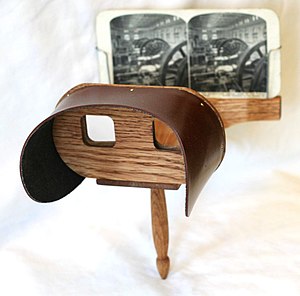I was reading the local paper this morning. On Mondays it has a section on Science and Technology with current stories and even reviews of blogs that might be of interest. This got me thinking about the ubiquitous phrase, "science and technology". You see this phrase everywhere and you might believe it represents one big concept. But science and technology are very, very different beasts. My dictionary defines science as:
the intellectual and practical activity encompassing the systematic study of the structure and behavior of the physical and natural world.
The Latin root of the word,
scire, means
to know. Science attempts to understand the world around us. The goal is not to change that world. Change is the domain of technology. Again, my dictionary gives three definitions of the word
technology:
the application of scientific knowledge for practical purposes, especially in industry; the machinery and equipment developed from such scientific knowledge; and the branch of knowledge dealing with engineering and the applied sciences.
The word derives from the Greek,
tekhne, which means craft.
Another layer in the confusion over the word
technology is that it has come to mean computer, internet, or electronic gadget technology. If you are interested in "tech", you must be into the world of the geeks. Anything that is written under that banner is generally about some company in Silicon Valley or a new computer virus or the latest iPhone. Those are cool but our broader understanding of technology and how it affects us every day is very limited if we just consider those types of stories.
No, the stories of the broader issues in technology are all over the newspaper, not just in the Technology section. Let me illustrate using today's (July 19, 2010)
New York Times. Let's start with BP. The Gulf oil disaster has been in the headlines almost every day for three months. Today's news is that the new cap is holding so well that BP might just leave it closed. Interestingly, the government is less optimistic that this might happen. There is even a hint that leaving it closed lets BP off the hook for some civil damages because the true rate of the oil spill will never be known.
The story at its heart is one of technology. The story includes the following description:
The cap that was eventually used was designed and built more or less from scratch, although off-the-shelf valves and rams were used. And as with any engineering project, particularly one being conducted by remotely operated submersibles a mile underwater, installation procedures had to be devised and practiced.
A second story details that many people in the Louisiana Cajun population are looking to leave the Gulf Coast because of the damage caused to the fishing industry by the oil spill (translation: failed technology).
Another front page story in today's
Times talks about how job training programs are falling dismally short of getting people back to work. Part of this story is simply that there are five people unemployed for every job vacancy. No amount of training can fix that problem. But the second part of the story is that the needs for training keep morphing as the jobs that do exist become ever more technical.
One example of a program that seems to be working is in my old backyard of Minneapolis. The Hennepin County Technical College is offering retraining programs to shift people from the manufacturing jobs of the past (which included mainframe computers) to something that the Twin Cities is very strong in - medical devices. The article quotes Richard Kelley, who oversees the Hennepin Tech program, as saying, "Nobody wants to see a pacemaker stamped, 'Made in China'". Many of the jobs that are open but unfilled are skilled technology jobs. This is the dilemma we face as we have outsourced lower-skilled manufacturing jobs to Asia and Latin America.
I could go on but I think you get the idea. Technology stories are everywhere - they are just not the "High Tech" stories found on the business pages.
So back to where I began, the phrase "Science and Technology". You see a lot of interesting articles about the latest discoveries in science but you see very little in the news that speaks to what is happening in technology beyond Silicon Valley (if I might use that term to capture our current definition of High Tech). We need more news about the rest of the technology spectrum. It impacts our daily lives in ways much deeper than whether you get a new iPhone. The stories are there, indirectly at least, but you have to read between the lines to find them. I would just like to see them given a little more visibility.
Maybe that's the job for this blog?
 Image via Wikipedia
Image via Wikipedia Brian May has written the first of three planned books on one of the photographic subjects that he collects. The book is entitled, "A Village Lost and Found". The village referred to is Hinton Waldrist, in Oxfordshire, west of London. The village was photographed stereoscopically over the years by an early practioner of the art, T.R. Williams. Nobody could identify the place in these old photos until May posted one online. Within 36 hours, someone identified the location for him. He has visited it many times since then, comparing current views to the originals in the old images.
Brian May has written the first of three planned books on one of the photographic subjects that he collects. The book is entitled, "A Village Lost and Found". The village referred to is Hinton Waldrist, in Oxfordshire, west of London. The village was photographed stereoscopically over the years by an early practioner of the art, T.R. Williams. Nobody could identify the place in these old photos until May posted one online. Within 36 hours, someone identified the location for him. He has visited it many times since then, comparing current views to the originals in the old images.









